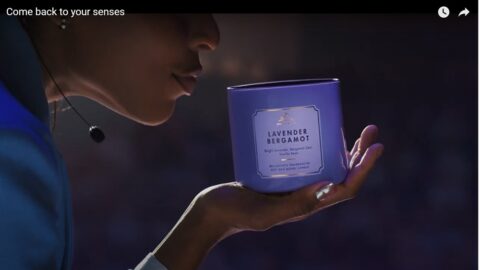This is Part 1 of the Retail TouchPoints series, titled: Retailer-Supplier Collaboration: The New Operational Imperative. Based on conversations with retailers, analysts and other industry experts, this 4-part feature examines the dominant trends, challenges, technologies and achievements now at the forefront of attaining full retailer-supplier collaboration. Part 2 of the Retail-Supplier Collaboration feature will appear in the February 19 newsletter.
Today’s retail supply chain executives are moving more products farther and faster than ever before. They are pressured by consumers’ new-found empowerment over products and delivery, uncertain global economies and advances in globalization, localization, omnichannel retail and other demands ― all putting strain on the supply chain process.
To combat today’s supply chain challenges, smart retailers are taking a more focused look at collaborating with their supplier partners. A successful retailer-supplier collaboration can help alleviate pressures along all key points in the supply system. A strong alliance can bring products to market faster, reduce production and logistics costs, drive market share, and increase sales, while maximizing ROI for both partners.
Collaboration is not a new concept, but is becoming more vital in today’s competitive environment. But a number of concerns have deterred retail and CPG companies from pursuing a complete collaboration vision. Those concerns include: partnership trust, the level of intelligence that should be shared, and the ripple effects of data integrity errors.
Retailers that have not yet taken the leap into retailer-supplier collaboration can learn from those who have created successful programs, such as CVS Caremark. “Today’s more intricate challenges to supply chain execution have brought new focus to the strategic benefits of collaboration,” said Ron Link, SVP of Logistics for CVS Caremark, in an interview with Retail TouchPoints. “There is an emerging realization that neither the retailer nor supplier can generate the potential benefits as independent parties who operate at arm’s length. The combined focus of both parties is required to maximize effectiveness in an increasingly diverse and complex supply chain environment.”
The Impetus
Because retailers and suppliers are collecting feedback from consumers quicker, through new channels such as social media, they are more highly motivated to pursue collaboration, noted Brian Houck, Retail and Consumer Advisory Director at PricewaterhouseCoopers. “While yesterday’s in-person focus groups gleaned the feedback required for supply forecasting, promotion, replenishment and product-design input,” he said, “long delays in delivering that feedback often resulted in missed forecasts, out-of-stocks, poorly launched products and excess inventory. But present-day social media, consumer forums, video posts and other online communities, as well as direct selling outlets, have opened new, nearly instantaneous channels of feedback. The ensuing amount of immediate and comprehensive data gives retailers and suppliers renewed opportunities to collaborate and build a cohesive approach to meeting customer demand and product preferences while effectively managing inventory levels and profits.”
Other specific factors generating opportunities for teamwork, stated Houck, include increasing complexities in demand signals due to omnichannel growth; rapid proliferation in product and service offerings; and new rigor around managing working capital. These dynamics “are moving retailer-supplier collaboration from an attractive opportunity to a necessary ingredient for a successful retail business,” he remarked, “and are providing new rationale to justify investment in collaboration programs.”
Houck sees retailers becoming much more willing to share data and engage with suppliers at each step of the promotions cycle. In fact, today it is not unusual for retailers to disclose information for entire categories to support development of targeted promotional items, Houck stated, while suppliers, in turn, provide details on production plans to make sure capacities and schedules align with promotional lead-times and calendars. “When collaboration is done effectively, we have observed significant improvements in consumer response to promotions, fewer out-of-stocks and reduced excess inventory.”
Data gleaned by the Aberdeen Group also shows the retailer-supplier alliance moving to center stage: Over the past two years, retail and consumer market companies have increased collaboration activities with core suppliers by nearly 29%, reported Kevin Permenter, Senior Research Associate for Aberdeen, and with non-core (long-tail) suppliers by 15%. “These numbers indicate that companies are turning toward collaboration in order to compete and thrive,” he stated, adding that these same companies also increased internal collaboration by 97% over the same two-year period.
A recent Aberdeen report, titled: B2B Collaboration: No Longer Optional, indicated that B2B collaboration was ranked as the number two and four strategies by best-in-class companies. (Internal collaboration was ranked as number one for both supply chain planning and execution.) Of the 83% of industry leaders with B2B collaboration initiatives in place, 18% were established in the last year and 42% within the last two years.
The report compared the performance advantages of leaders versus followers in B2B collaboration, and revealed significant gains for leaders, including:
- Cash-to-cash cycles that are half;
- 6.9% less increase in total landed costs (total cost of a product once arriving at the buyer’s door); and
- 7.3-point better service level of 96.7%.
The Partnership Agreement
Collaboration comes in many forms and approaches. For example, according to Houck, if a supplier sells a single low-volume, non-seasonal SKU, collaboration requirements tend to be very low. On the other hand, where there are significant co-dependencies between the retailer and supplier, formal and broad collaboration will be necessary for the program to be effective.
The merchandising, supply chain and IT capabilities of both the supplier and retailer also come into play: “When one of these functions lags or leads in either party, it is not unusual for one party to take ownership within the relationship, or in some cases, across a product category,” explained Houck. “In these situations, recovery for expense and effort typically occurs on a fee basis, as a pass-through expense, or is built into the product pricing.”
There also are fees linked to negative scorecard results. Supply chain scorecards, common within the retailer-supplier agreement, evaluate a supplier’s key performance indicators, such as on-time shipments and deliveries; inventory accuracy; percentage of orders shipped complete and/or without errors; and other measurements.
“Scorecards are an important tool for both retailer and vendor,” said Jill Barron, VP, Supply Chain, for The Neiman Marcus Group. “However, many retailers are challenged to gather all the important KPI’s, sometimes from many different systems, in order to produce a scorecard that is meaningful and timely for the vendor. The ability to communicate out the scorecards upon the vendor’s request will continue to be important to proactive collaboration.”
Cloud-based supplier portals that provide real-time access to supply chain data help increase scorecard metrics, streamline operations, reduce fees and provide new, trending benefits to collaboration.
Merchandising And Product Development
Another key trend in the retailer-supplier partnership is “more collaboration on merchandising and product development,” stated Larry Smith, SVP Planning and Replenishment at West Marine, a specialty retailer of boating supplies and accessories. West Marine is a collaboration innovator: As early as 2001, the company launched a large-scale Collaborative Planning, Forecasting and Replenishment (CPFR) program encompassing 200 suppliers.
“Especially in the merchandising and product development areas,” noted Houck, “PricewaterhouseCoopers is seeing increased instances of suppliers managing product categories, cross-supplier collaboration, and co-development of new products and services.”
A recent report from Accenture on the topic of collaboration noted that retailers and CPG companies that collaborate on merchandising and product development can achieve mutual benefits across several key areas, including:
Analytics-driven insights. To attract today’s more demanding consumers, both manufacturers and retailers must develop deep insights into shopper behaviors, needs and buying patterns. Such insights — which enable retailers and manufacturers to profile, analyze and target specific segments — are best developed by gaining a single and shared view of consumers;
Assortment planning. In today’s marketplace, retailers and manufacturers compete directly for the same shelf space. “Collaborative assortment” is needed here — bringing together each party’s distinct capabilities, data and consumer insights so they can view categories in a more holistic way to drive better growth; and
Marketing and promotion. Rather than running separate campaigns to promote their respective products, manufacturers and retailers can combine forces to bundle…products in the same promotion, such as a branded meal bundled with a private label soft drink.
Other collaboration trends include new advancements in store-level Distributed Resource Planning (DRP) systems, which “enable retailers and manufacturers to build shared plans for consumer demand and supply,” said Patrick Javick, VP, Retail Apparel and General Merchandise for GS1, a global standards organization. “DRP also allows both parties to design and deliver winning products while lowering variable operating and capital costs.”
Technology Is No Substitute
While new systems and technologies are important to communicating data and streamlining the retailer-supplier partnership, “they are not a substitute for face-to-face collaboration,” stated Barron. “If you haven’t fully developed the technologies for enhancing your collaboration efforts, then go out and meet your vendors, visit their operations and develop a relationship with them. This will help you collaborate even better when you can adopt the supporting technologies.”
Part 2 of Retail-Supplier Collaboration: The New Operational Imperative will appear in the February 19 newsletter.












